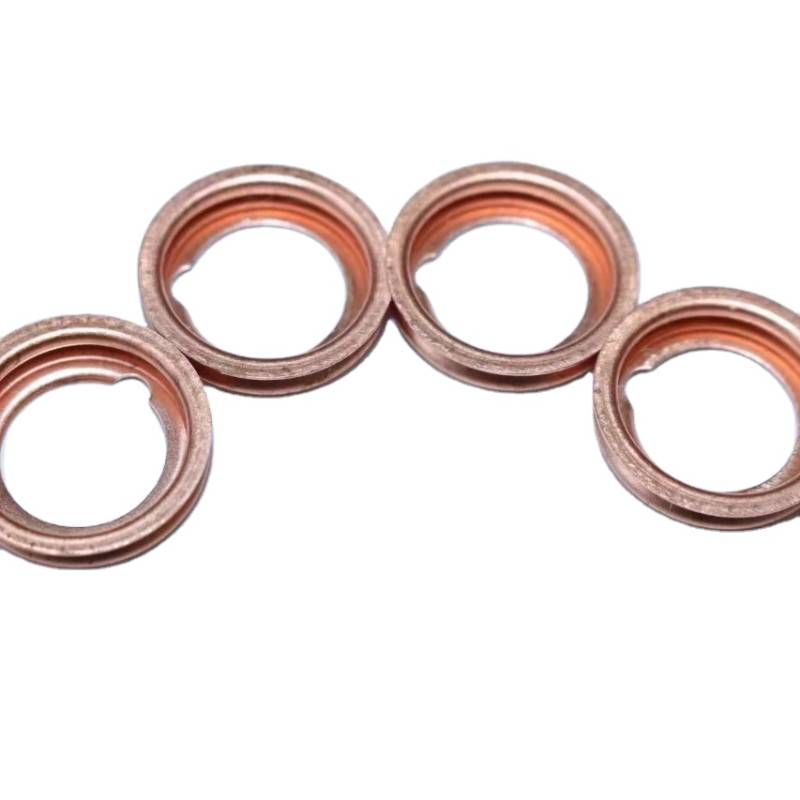Choosing the Right Axle Shaft Seal for Optimal Vehicle Performance and Longevity
Understanding Axle Shaft Seals Importance and Maintenance
Axle shaft seals are critical components in automotive systems, serving a vital role in the overall performance and longevity of vehicles. These seals ensure the proper functioning of the drivetrain by preventing lubricant leakage, blocking contaminants from entering the axle, and maintaining proper pressure in the assembly. Understanding their functionality, importance, and maintenance can be crucial for car owners who want to ensure their vehicles operate smoothly.
What is an Axle Shaft Seal?
An axle shaft seal is a circular seal designed to fit over the axle shaft and is typically made from durable materials like rubber or silicone. It serves as a barrier at the point where the axle protrudes from the differential or gearbox. The primary function of the seal is to contain the lubrication fluid (usually gear oil) within the axle assembly while preventing dirt, water, and other debris from infiltrating the system. This sealing mechanism is essential for the efficient operation of the vehicle's drivetrain and its associated components.
Importance of Axle Shaft Seals
1. Preventing Lubricant Leakage The main function of the axle shaft seal is to prevent the essential lubricant from leaking out of the axle housing. If the gear oil escapes, it can lead to increased friction and wear between the moving parts, ultimately resulting in significant damage and costly repairs.
2. Blocking Contaminants Axles operate in harsh environments. Without effective seals, dirt, mud, and other contaminants can enter the axle assembly. This intrusion can cause premature wear of components, leading to failure. The presence of contaminants can also compromise the lubricating properties of the fluid, exacerbating the wear.
3. Maintenance of Pressure The seal maintains proper pressure within the differential or gearbox, which is vital for ensuring that the lubricating oil circulates effectively. Maintaining proper pressure helps in distributing heat and preventing overheating, leading to smoother operation and increased efficiency.
axle shaft seal

Signs of a Failing Axle Shaft Seal
Recognizing the signs of a failing axle shaft seal early can save car owners from expensive repairs. Common symptoms include
- Oil Leaks The most apparent sign is the presence of oil spots on the ground where the vehicle is parked. - Noise Unusual grinding or whining noises from the axle area can indicate low lubricant levels, potentially due to a compromised seal. - Vibration Excessive movement or vibrations while driving may point to inadequate lubrication and worn-out components.
Maintenance and Replacement
Maintaining axle shaft seals involves regular inspection, especially during routine service checks. If any signs of leakage or damage are detected, it is advisable to have the seals replaced promptly. Replacement is not overly complex but often requires a knowledgeable mechanic, as it involves dismantling parts of the axle assembly.
Choosing quality parts for replacements is crucial. Low-quality seals may fail prematurely, leading to repeated problems. Using genuine or high-quality aftermarket components ensures better durability and performance.
Conclusion
In summary, axle shaft seals are essential for the proper functioning of a vehicle's drivetrain system. They not only prevent lubricant leaks but also block harmful contaminants from entering the system and help maintain necessary pressure. Regular maintenance and timely replacement of these seals are vital for ensuring the longevity and efficiency of the vehicle. By understanding their importance, car owners can make informed decisions to protect their investment and enhance safety on the road.
-
The Ultimate Guide to Car Repair Kits: Tools and Essentials Every Driver Should Own
News Aug.01,2025
-
The Complete Guide to Oil Pan Gaskets: Sealing Engine Leaks the Right Way
News Aug.01,2025
-
Preventing Oil Leaks: A Complete Guide to Oil Pan Gaskets and Drain Seals
News Aug.01,2025
-
Everything You Need to Know About Oil Pan Gaskets and Drain Plug Seals
News Aug.01,2025
-
Essential for Car Owners: How to Use a Car Repair Kit to Deal with Minor Breakdown
News Aug.01,2025
-
Comprehensive Guide to Engine Oil Sump Gaskets and Related Seals
News Aug.01,2025
-
The Ultimate Guide to Boat Propeller Bearings and Trailer Wheel Bearings
News Jul.31,2025
Products categories















